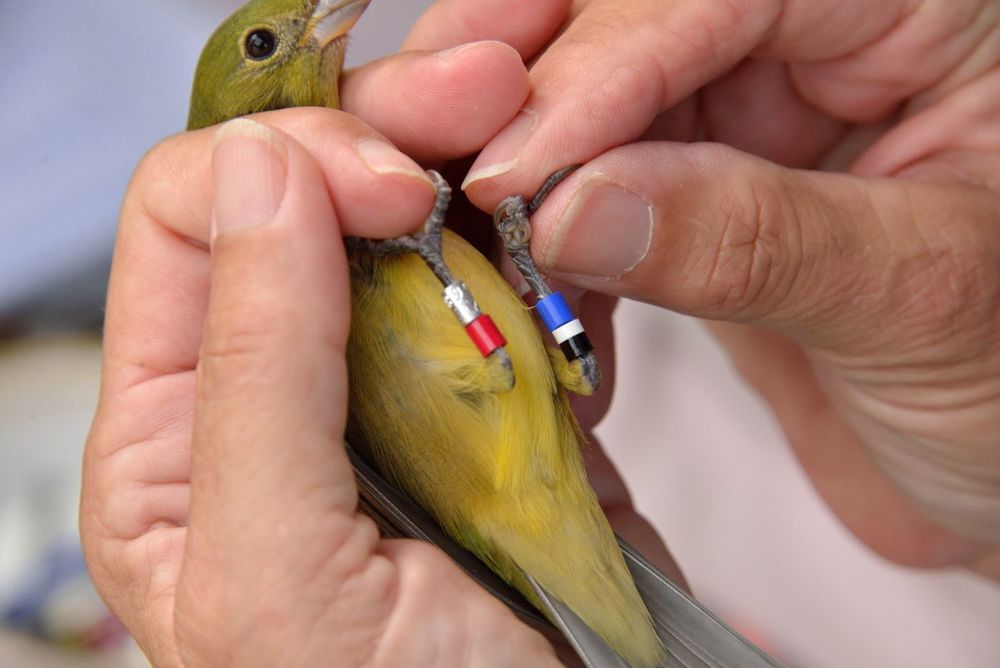 Birds have been banded since ancient times. In one recorded instance a besieged Roman garrison was sent a swallow with three threads around its toes, indicating that help would arrive in three days. By the late 16th century many species of birds were being tagged in some way. Some Chinese put silver tablets on their falcons, inscribed with the owner’s name. The first record of a metal bird band recovery was about 1595 when one of Henry IV’s falcons got lost in France and ended up in Malta, 1300 miles away.
Birds have been banded since ancient times. In one recorded instance a besieged Roman garrison was sent a swallow with three threads around its toes, indicating that help would arrive in three days. By the late 16th century many species of birds were being tagged in some way. Some Chinese put silver tablets on their falcons, inscribed with the owner’s name. The first record of a metal bird band recovery was about 1595 when one of Henry IV’s falcons got lost in France and ended up in Malta, 1300 miles away.
In other parts of the world they call in ringing, but in the U.S. we call it banding. It’s the process of putting a metal or plastic band around the leg, wing, or neck of a bird in order to identify it in the future. Most commonly, numbered metal leg bands are put around the legs of birds, a tightly controlled procedure supervised by the national USFWS Bird Banding Laboratory in Patuxent, MD. Bird banders must be licensed and abide by the detailed rules of the lab. I banded birds with my classes for several years and found the requirements exacting and the paperwork demanding; it’s not something I’d do just for fun. The stringent rules and licensing are necessary because we don’t want just anyone trapping and banding birds. Even placing plastic bands or marking birds with dye is controlled by the lab as birds move around and there needs to be one central location tracking all the marked birds.
What do we learn from banding? Banded birds may be recaptured once or several times or a bird may die and leave the band somewhere it can be found. From these recaptures or found bands we can get s general idea of how long the bird lived, where it traveled, how many times it nested, and maybe how it died. But the recovery of banded birds is rare. Hunted birds, like ducks and geese, that have been banded might have up to a 25% band recovery. With songbirds it’s more like .01%.
Back-mounted radios are sometimes used, although it is very expensive. I did a little telemetry with migrating thrushes in Illinois and I had a graduate student who tracked Spotted Owls with radios. (Sideline: she tracked an owl all the way from Oregon to Chico, CA by radio signals and the signals turned out to be from a turtle that someone else had radio-tagged.) Geese or swans used to be marked with neck bands so they could be identified at a distance. It turns out that the neck bands make the bird more visible to predators as well, so neck banding is not as common as it once was. Years ago I observed several Tundra Swans at Gray Lodge Waterfowl Refuge in California that were banded by Russian scientists! (When migrating south from way up north, almost any direction is south.)
If you do find a band or a bird with a band you can report it to the Patuxent Wildlife Research Center Bird Banding Laboratory
Bird Banding
We independently evaluate all recommended products and services. If you click on links we provide, we may receive compensation.